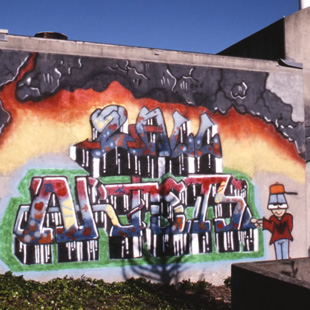
Graffiti is a polarizing art form. Many appreciate its boldness and the vibrant color it adds to the urban landscape while others admonish it as vandalism. As graffiti spread from New York City throughout the United States in the 1980s, regional styles and techniques were adapted and remixed. As graffiti artist Neon explains, most graffiti in New York was on trains, while Bay Area artists focused on outdoor walls.
In this episode of Art School, Neon discusses the pioneers of Bay Area graffiti, the most popular places to paint, and the styles that originated locally. He also talks about the PBS film Style Wars, which had a big impact on artists around the country.
Since the '80s, graffiti has gained more respect and value from the global art community, and many graffiti artists went on to show their work in galleries internationally.
You may be well-versed in graffiti formats, but for those curious about the difference between a tag and a piece, or what it takes to make an enormous spray can painting, we asked graffiti artist Neon to describe the five different types of graff on the streets. Knowing these terms can help you evaluate, critique and appreciate the graffiti in your neighborhood.
Discover more local graffiti and street artists featured on KQED, including Scape, Barry McGee (Twist), Margaret Kilgallen (Meta/Matokie Slaughter), Crude, Adam 5100 and Mike Shine.